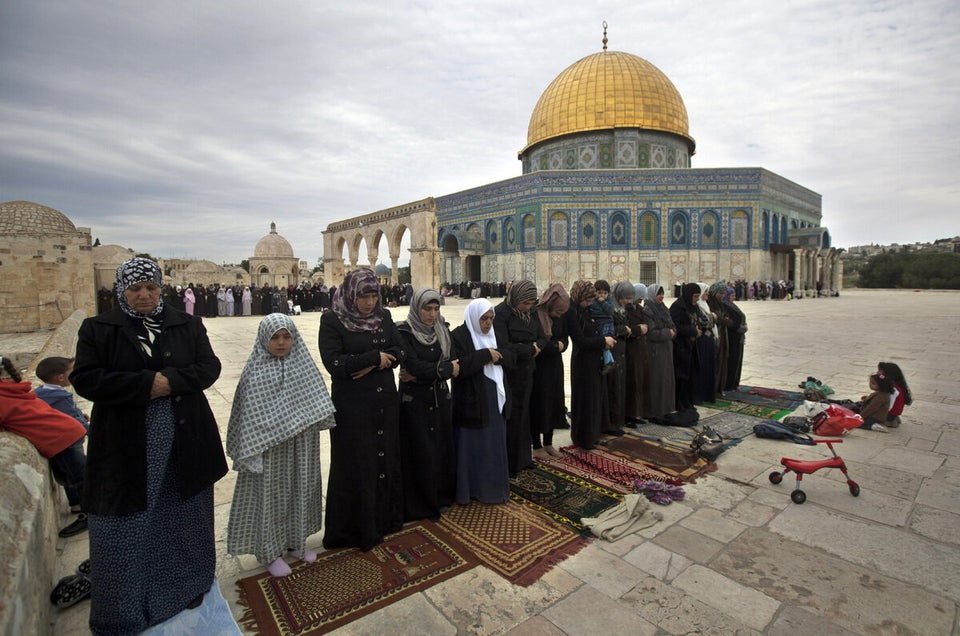
Jerusalem, situated at the busiest intersection of the busiest highway in the history of the world, was ideally located where armies competing for world dominance had to pass. Each time a new empire would arise, Jerusalem would fall to destruction. Far from being a "city of peace," it was and remains a fractured and divided city, echoing the fragmentation found within all people. Jerusalem teaches us that each time our life seems destroyed and razed to the ground, it can be rebuilt and life has to go on.
As in the word "Salem" from the name for Jerusalem, the Semitic root meaning of the word "Islam" is "to mend that which is broken" or "to make whole and complete." It signifies a slow healing process that allows one to mend their brokenness; a yearning desire to heal that is found within each of us.
We all have fractures and brokenness in our lives. Many things in life affect us and "fracture" us in unexpected ways. Cults like ISIS take advantage of people's natural desire for healing by offering a quick, monolithic solution. Instead of healing, their formula creates a Frankenstein's monster, a mishmash of dead parts; disorientation and destruction. Extremists divert their cohorts' attention from the natural brokenness within themselves to an external scapegoat that must be sacrificed and destroyed in order to eliminate all the world's problems ushering in a Messianic age of Utopia.
The notion of "normal sanity" is a matter of perspective; the reality is that all humans have varying degrees of "psychological," spiritual or social issues. I remember reading a medical journal article years back where a psychiatric researcher identified a brain scan as belonging to a "sociopathic killer." It turned out to be a scan of his own brain.
There is an art form called Kintsukuroi that relates to reassembling simple, unremarkable pottery, which then become exquisite art when the broken pieces are painstakingly reconstructed using gold and other precious materials that emphasize the beauty of the brokenness. This art form inspires many metaphors about the human condition. We all are clay, each uniquely formed like pottery. As with everything shattered, the fractures in each of us are unique and no two vessels can break exactly the same.
The general notion that we are all "sinners" and must atone for our sins is found among many of the world's faiths. Yet healing often called "redemption" and "salvation" requires a process that gradually takes time and work grounded within one's own self. Cults and extremist groups fantasize to provide quick solutions for their natural state of brokenness by offering shortcuts to a salvation that is neither natural nor redemptive.
Essentially there is neither a quick nor absolute solution. Yes, there's a problem, it's naturally there, yet we each have to work it out on our own. We can be mentored or guided from the side, but we have to make the effort ourselves. Trying to short-cut the process by unhealthy and self-destructive means is an exercise in futility.
By the time we become young adults, our brokenness begins to develop more psychologically and ideologically. How such fracturing takes place during that fragile phase of life will determine how we see the world and behave for the following decades. It is at this crucial age that vulnerability, as well as impatience, is at a peak, which accounts for the reason why most recruits to cults and extremist groups like ISIS tend to be between the ages of 15 to 25.
Many of us know a story of meeting insurmountable hazards after trying a shortcut. We often ruin our efforts when we rush. Progress seldom comes quickly or easily; it comes with effort, reflection, knowledge, foresight and perseverance. Extremists, like ISIS, exploit our natural impatience, while attributing pettiness and tyranny to the Divine. If the Creator had wanted us perfect, we would have been created that way.
There is, however, a solution, albeit not a simple one. First, it is to recognize that we all have the same natural problem. That problem can be personified as a state of brokenness found within each and every human being. That's what makes us mortal. There are many external factors that contribute to these fractures: upbringing, economics, social, religious and political influences. How we attain healing will determine the outcome. Attempting to attain salvation by attacking others is like trying to fix a physical fracture by burning down the hospital. The natural way is to look deep within our own selves and begin the healing process from within.
The Qur'an teaches that in all people are the tools to go in either direction. We all have within us the tools to be successful or fail, to be virtuous or wicked. There will always be external factors that will inevitably affect us, however, how we choose to react to them is wholly our choice. Like the various roads of Jerusalem, there are many paths to healing.
Follow HuffPost Canada Blogs on Facebook
MORE ON HUFFPOST:
